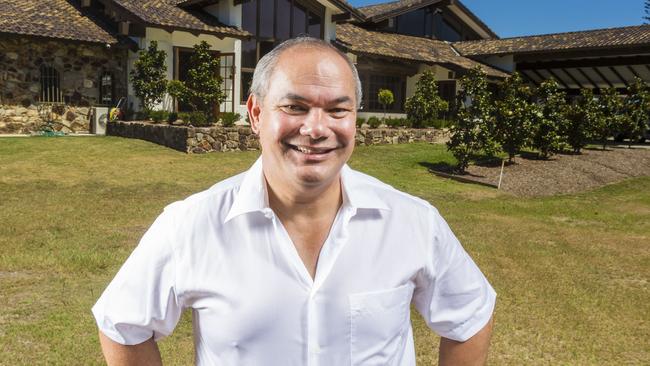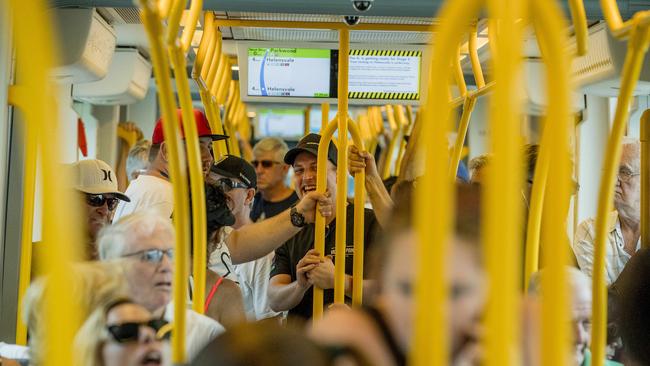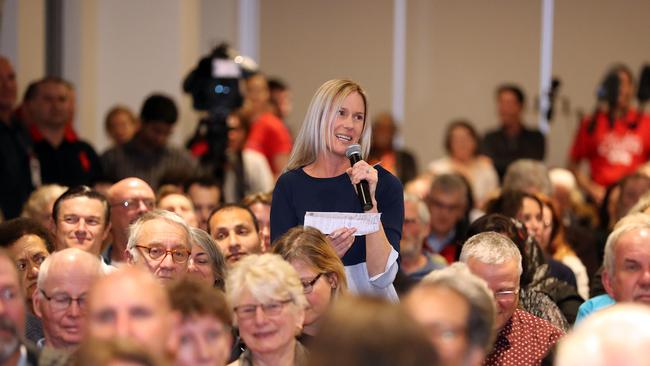Michael Hart and Tom Tate go head-to-head on light rail debate
IT’S a debate that’s been going on for years — where should the Gold Coast’s light rail’s southern link go? Now, Gold Coast Mayor Tom Tate and Burleigh MP Michael Hart weigh in.
Gold Coast
Don't miss out on the headlines from Gold Coast. Followed categories will be added to My News.
IT’S a debate that’s been going on for years — where should the Gold Coast’s light rail’s southern link go? Now, Gold Coast Mayor Tom Tate and Burleigh MP Michael Hart weigh in
Michael Hart, MP
WE should learn the major lesson that is obvious from light rail stages 1 and 2: that there was no overall plan, just a few thought bubbles.
The plan should have always been to start light rail at our major transportation hub, the Gold Coast Airport.
From there, it would have transported passengers to accommodation, major shopping centres, entertainment precincts, universities, beaches, hospitals, schools and major employment centres while also having connectivity to heavy rail and bus networks — catering to both tourists and locals.
For light rail to work it needs to take passengers from where they are to where they want to go — and lots of them.

As a representative of the people in my electorate, I want light rail to be more attractive so that commuters use the light rail instead of their car; that means efficient and cheap, not just fast and scenic.
Public transport is a service that will never make money. It’s about minimising losses. That means more bums on seats and destinations people want to go to.
THE DEBATE OVER THE LIGHT RAIL
So look at my proposed route, check the destinations and overlay population figures 400m either side.
You can soon work out how many people are likely to use a western route rather than down the coast through Palm Beach (400m east is in the ocean).
The state already controls the western route versus the disruption, land resumptions, loss of on-street parking created by the coastal route through Palm Beach. If it cost more to build, so be it. If it takes longer to travel, so be it. It’s never going to make money, so be it.
We have it, now we have to make it work.
So before the thought bubbles become reality, let’s look at every alternative in a comprehensive business case and pick the best outcome for us all.
Mayor Tom Tate

SINCE 2012 when I was first elected, I have kept a key promise to the community — that is, listen to the majority while respecting the concerns of others.
In November 2015, this council engaged in one of the most comprehensive community surveys in its history.
The subject was the extension of light rail, south from Broadbeach. It was an “open book’’ approach in which we gave every resident and business a voice. The key focus was on possible alternative routes south.
Several routes were proposed including a light rail corridor direct to the airport, as well as some western route options.
The survey attracted 3606 responses, with 79 per cent supporting light rail from Broadbeach to Burleigh, and 70 per cent backing light rail direct from Burleigh to the airport. Importantly, the majority made it clear they wanted the shortest and most direct route from Broadbeach to Burleigh and on to the airport and Coolangatta — so a direct coastal route following the Gold Coast Highway.
No one can say they did not have the opportunity to have their voice heard as the survey was backed with widespread media reporting, mobile information marquees, staff at weekend market stalls, online survey tools and an array of information provided to councillor offices.

As Mayor, I don’t do “popular politics’’ very well. It’s not in my blood and I urge career politicians to quit trying to be popular and stick to the facts.
The facts are: light rail costs around $70 million a kilometre to lay; heavy rail costs around $200 million per kilometre; the city’s light rail story is one of exceptional patronage; light rail reduces the reliance on motor cars; and we are a city that needs to plan for considerable population growth.
Planning for that growth means building upwards, not outwards. At the same time, we still need to be able to get around and light rail is a big part of the answer.
The current 2013-2031 City Transport Strategy specifically identifies the role of light rail in our future growth. I note smart cities like Newcastle, Canberra and Sydney are now rolling out light rail.
As we grow, building upwards through sensible infill and high rise means we can ensure our lifestyle is protected, without the western suburban sprawl that has choked the likes of Sydney and Melbourne.

Light rail is effectively our future transport spine, running from Helensvale to Coolangatta via the airport. Smart cities plan their transport spine and then overlay their city planning instruments to allow for that development. That’s what we have done.
Let’s support the sensible, strategic and cost effective evolution of our city’s future transport spine. After all, that’s what the majority wants.


